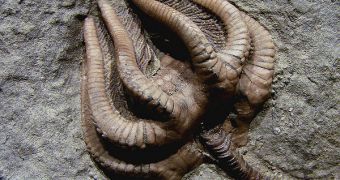Some 251.4 million years ago, the Permian Age came to an abrupt end, when a massive extinction event, known among experts as the “Great Dying”, killed off just about everything on the planet, with just a few exceptions. The event marked the beginning of the Triassic Age, and experts have been puzzling over what might have caused more than 96 percent of all marine species and 70 percent of terrestrial vertebrate species to die off. Also, this is the only mass extinction that affected insects. Some 83 percent of all existing genera were killed off, NewScientist reports.
Over the years, various explanations were proposed, ranging from the common asteroid impact, to massive volcanic eruptions, or a combination of the two. Some researcher even proposed that the mass extinction may have been caused by emissions of toxins into the atmosphere from cyanobacteria, a type of algae that can produce harmful chemicals under certain conditions. However, there is little evidence to support these claims, and no one can say for sure what caused the Permian-Triassic dying.
Now, a new idea suggests that burning coal may have been the main culprit behind the devastating event. Experts say that massive spreads of the fossil fuel burnt continuously, for years, eventually leading to enough imbalances on the surface of the planet to kill just about anything. The same science group believes that the effects this may have had on the atmosphere were augmented by explosive encounters between coal layers and magma from volcanoes, resulting in potent mixes of gas that could have finally either poisoned or suffocated most existing species.
The conclusion was drawn after analyzing solidified magma from a certain region of Siberia, where huge coal reserves also exist. Within only a few thousand years – a brief geological period – the magma may have unlocked millions and billions of tons of carbon dioxide (CO2) from the coal, much more than any human activity has produced artificially thus far. A massive process of ocean acidification would have ensued, which explains why so many of the water-dwelling creatures perished. Things would have also been bleak at the surface, where the air would have become unbreathable.
Stanford University scientists Norman Sleep and Darcy Ogden believe that a variant of this scenario happened, in which magma reached tar- and coal-rich sands underground, and heated the lighter material so fast, that it forced to rise to the surface rapidly. The contact with atmospheric oxygen would have ignited the highly-combustible mix, resulting in massive amounts of CO2 being released. “You're basically going to have something like a fire fountain every few kilometers or so over this vast moonscape that's erupting, with flares going high into the air and columns of smoke and fly ash. [The soil is] covered with coal tar and coal fragments and pieces of basalt,” Sleep explains.

 14 DAY TRIAL //
14 DAY TRIAL //